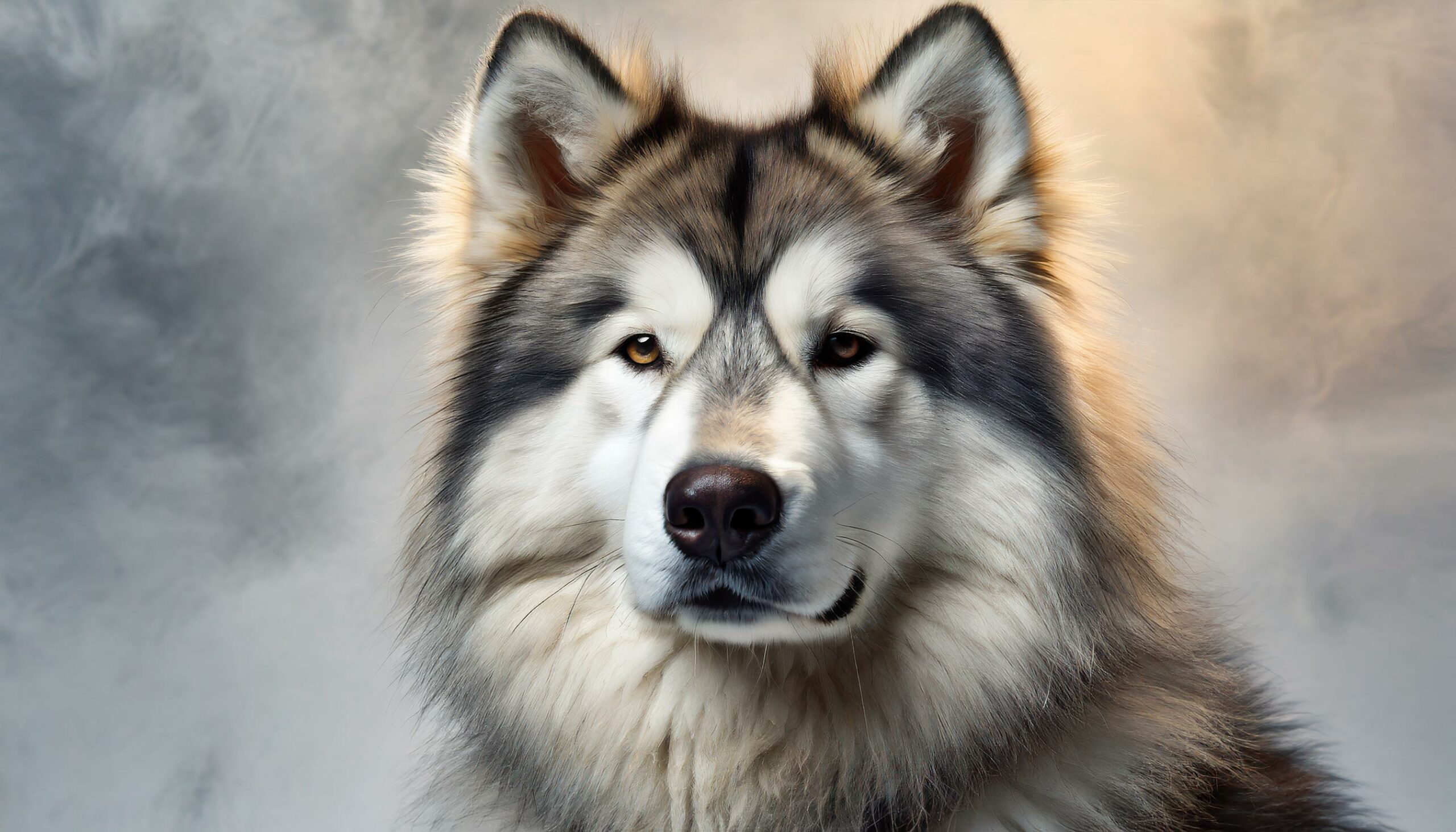The Alaskan Malamute, one of the oldest Arctic sled dogs, combines power, endurance, and a majestic presence. This breed is renowned for its strength and ability to haul heavy freight as a part of a team, embodying the essence of companionship and teamwork. With its wolf-like appearance and friendly disposition, the Alaskan Malamute is a beloved breed for those who appreciate the great outdoors and an active canine companion.
Origins and History
Originating in Alaska, the Alaskan Malamute was bred by the Mahlemut Inuit tribe, from which its name is derived. The breed played a crucial role in the survival of these Arctic people, hauling heavy sledges loaded with food or camp supplies across vast frozen landscapes. Unlike other sled dogs known for their speed, the Malamute was valued for its strength and endurance. Throughout history, this breed has been a vital part of expeditions, including Arctic and Antarctic explorations, demonstrating its incredible resilience and work ethic.
Physical Characteristics
The Alaskan Malamute is a large and powerfully built dog, with males standing 25 inches at the shoulder and females slightly smaller. The breed features a dense, waterproof double coat that protects it from extreme cold, with colors ranging from light gray through to black, with shading of sable to red, always with white markings. Its deep chest, strong muscles, and bushy tail curled over its back highlight its Northern heritage. The Malamute’s broad head and almond-shaped eyes convey a look of intelligence and curiosity.
Temperament and Personality
Despite its formidable size and strength, the Alaskan Malamute is known for its gentle and friendly nature. The breed is affectionate with its family, showing patience and a playful demeanor, especially with children. Malamutes are highly social animals that thrive on companionship, both with humans and other dogs. Their intelligence and independent spirit can pose a challenge in training, necessitating a firm, consistent hand and positive reinforcement techniques. Malamutes communicate with a wide range of vocalizations, from howls to more subtle woos, endearing them further to their human companions.
Health and Care
The Alaskan Malamute is generally a healthy breed, with a lifespan of 10 to 14 years. They are prone to certain genetic conditions, including hip dysplasia, bloat, and inherited polyneuropathy. Regular veterinary care, a nutritious diet, and exercise are vital for their well-being. Their thick coat requires regular grooming to manage shedding and keep them comfortable, especially in warmer climates. Due to their high energy levels and strength, Malamutes require ample daily exercise to maintain their physical and mental health.
Ideal Home Environment
The Alaskan Malamute is best suited for a home that can accommodate its size and exercise needs. They thrive in environments where they can have plenty of space to roam and explore, making them ideal for active families or individuals who enjoy outdoor activities. Malamutes do well in colder climates, given their thick coats. Early socialization and obedience training are essential to manage their strength and independent nature. They are well-suited to homes where they can be an integral part of family life, providing loyal and affectionate companionship.
Conclusion
The Alaskan Malamute, with its striking appearance, friendly nature, and remarkable strength, is a breed that commands admiration and respect. Ideal for those who lead an active lifestyle and can meet their needs for exercise and companionship, Malamutes offer unwavering loyalty and joy. For those willing to invest the time in training, socialization, and care, the Alaskan Malamute is a faithful friend and an impressive representative of the working dog’s noble heritage.
